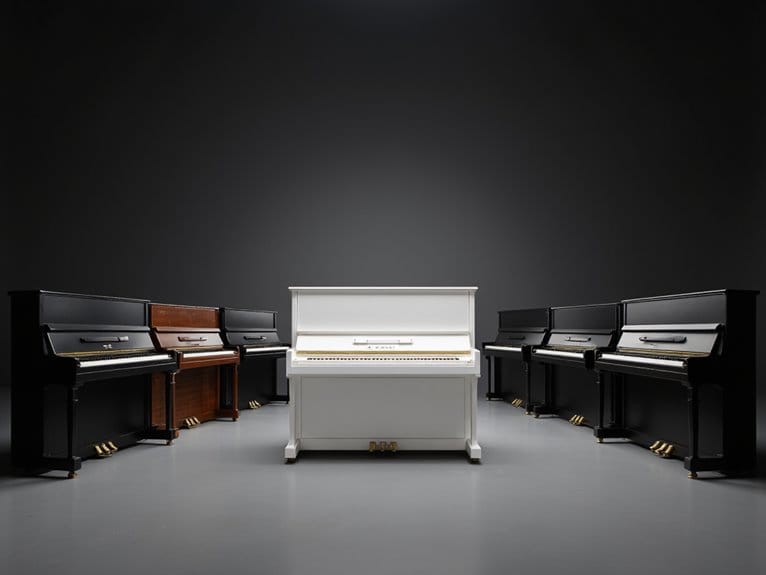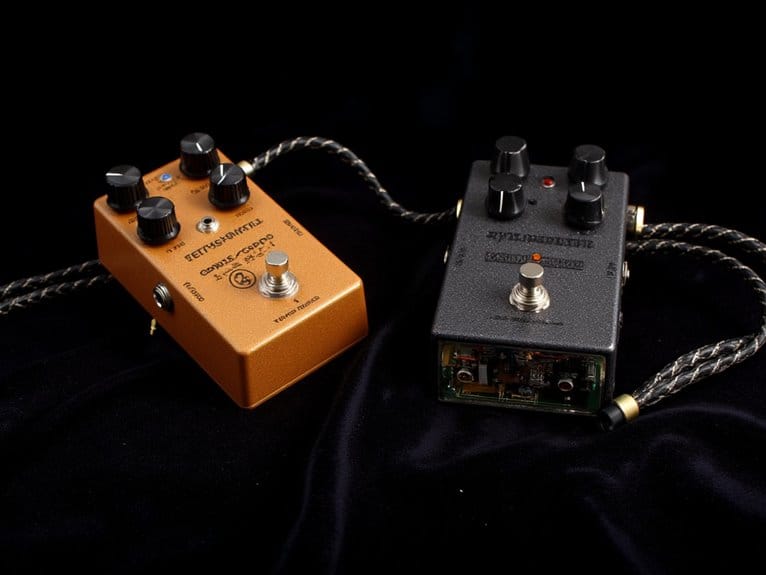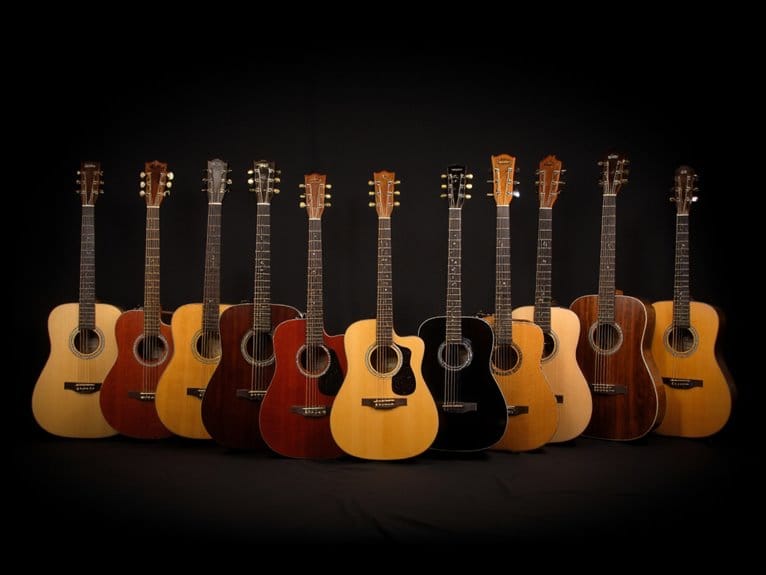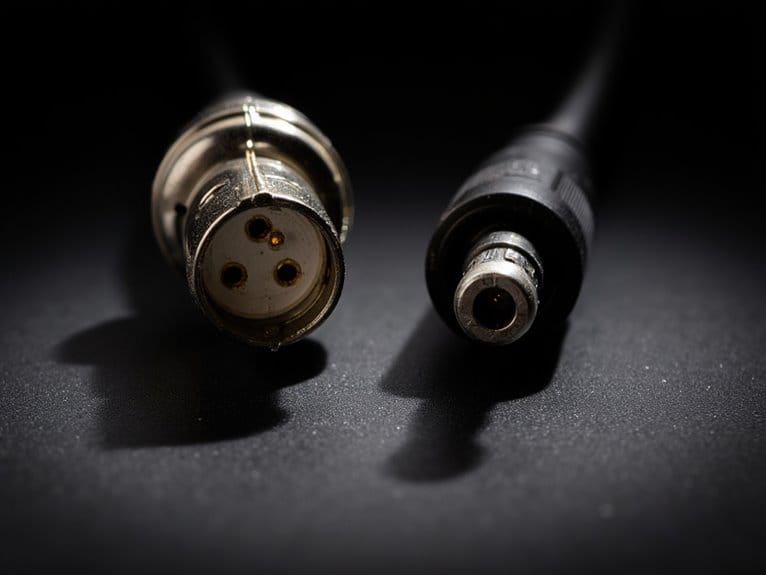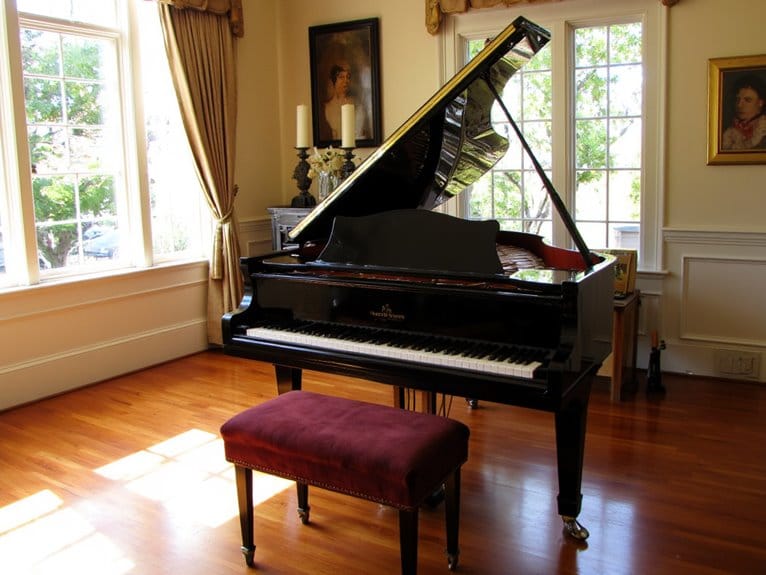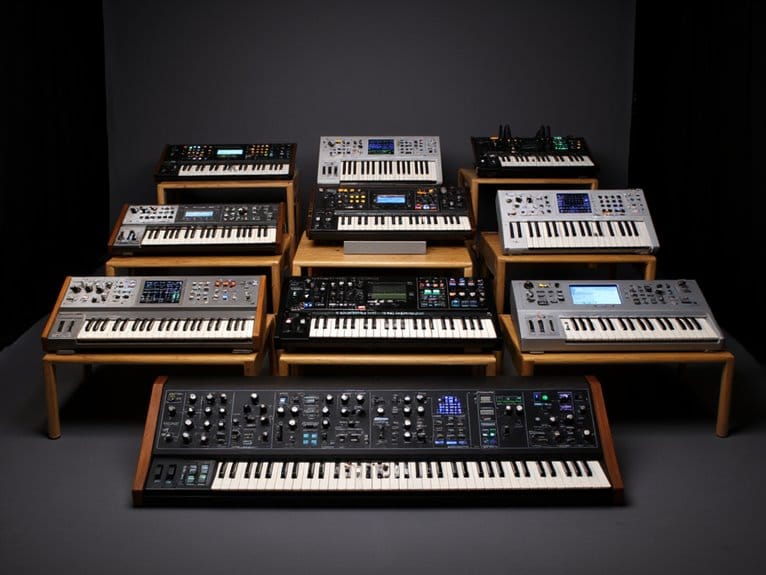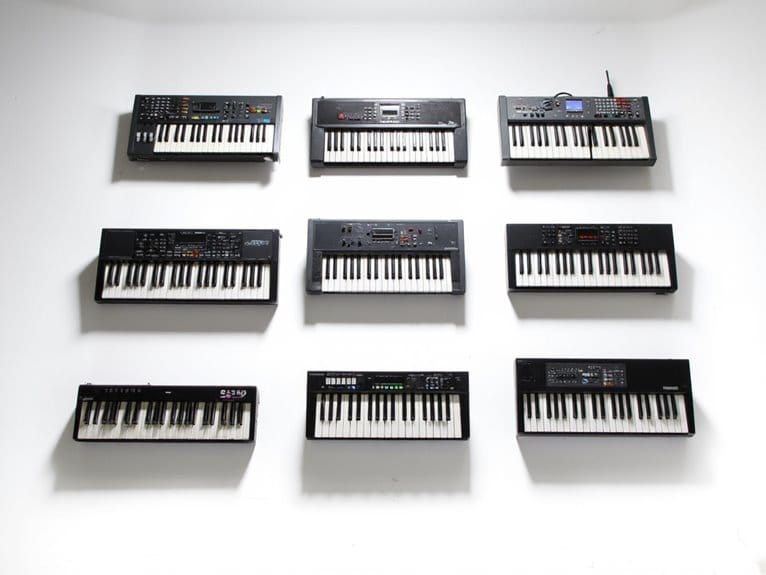10 Best 88 Key Digital Piano
After testing dozens of digital pianos, I’ve identified standout 88-key models that deliver authentic weighted action and professional sound quality. The Yamaha P71 offers renowned grand piano tones with touch-sensitive keys, while Alesis models like the Recital provide semi-weighted action with extensive learning features at budget-friendly prices. Top performers feature 128-note polyphony, USB-MIDI connectivity, and complete accessory bundles including stands, sustain pedals, and headphones, making them ideal for beginners through intermediate players seeking portable, full-sized functionality. Below, you’ll discover detailed specifications that’ll help determine your perfect match.
We are supported by our audience. When you purchase through links on our site, we may earn an affiliate commission, at no extra cost for you. Learn more.
Notable Insights
- Touch-sensitive weighted or semi-weighted keys provide authentic piano feel, with options ranging from basic velocity sensitivity to full hammer action.
- Sound quality varies from 5 basic voices to 480+ realistic sounds, with higher polyphony (128-256 notes) supporting complex musical passages.
- Connectivity features like USB-MIDI and Bluetooth enable integration with recording software and wireless device pairing for enhanced functionality.
- Weight considerations range from ultra-portable 6-pound models to heavier 25-pound options, affecting transportability versus stability and key action quality.
- Complete bundles typically include essential accessories like sustain pedals, stands, and headphones, with prices ranging from $200-$600 for quality options.
Alesis 88 Key Keyboard Piano with 480 Sounds and Accessories

When you’re stepping into the world of digital pianos as a beginner, the Alesis 88 Key Keyboard Piano with 480 sounds stands out as an exceptionally well-rounded choice that won’t overwhelm your wallet or your workspace. You’ll find the full-size, touch-sensitive keys provide authentic piano feel, while the 480 realistic sounds span everything from acoustic pianos to synthesizers, giving you plenty of room to explore different musical styles. The complete accessory bundle includes an adjustable stand, carry case, sustain pedal, and headphones, eliminating the need for additional purchases that can quickly add up.
Best For: Beginners looking for a full-featured digital piano with authentic feel, extensive sound variety, and complete accessories without breaking the budget.
Pros:
- Complete bundle includes all essential accessories (stand, case, pedals, headphones) eliminating additional purchases
- 88 full-size touch-sensitive keys provide authentic piano playing experience with 480 realistic sounds across multiple instrument categories
- Educational features like lesson modes, metronome, and USB-MIDI connectivity support learning and integration with music software
Cons:
- Battery operation requires 6 AA batteries which are not included and may need frequent replacement
- At 12.1 lbs, while portable, it’s heavier than some compact alternatives for frequent transport
- Built-in speakers may lack the power and depth for larger room performances or serious practice sessions
Alesis Recital 88 Key Digital Piano Keyboard with Semi Weighted Keys
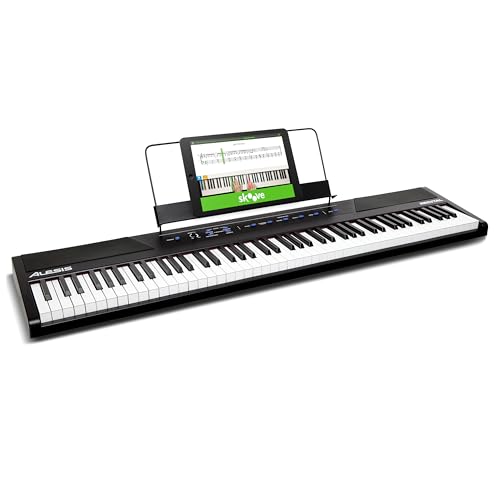
If you’re a beginner seeking an affordable entry point into digital piano playing, the Alesis Recital 88 Key Digital Piano stands out with its thorough educational features and budget-friendly price point. You’ll appreciate the semi-weighted keys with adjustable touch response, which provide a more authentic feel than basic keyboards, though they don’t quite match acoustic piano action. The five built-in voices—acoustic piano, electric piano, organ, synth, and bass—cover essential sounds for most learning scenarios, while 128-note polyphony guarantees complex passages won’t cut off. The Lesson Mode divides the keyboard into zones for teacher-student collaboration, making it particularly valuable for instruction.
Best For: Beginners and students looking for an affordable 88-key digital piano with educational features and authentic playing experience without the full investment of an acoustic piano.
Pros:
- Semi-weighted keys with adjustable touch response provide more realistic feel than basic keyboards
- Comprehensive educational features including Lesson Mode for teacher-student collaboration and included subscriptions to Skoove and Melodics
- Excellent portability with battery power option and lightweight 6.34-pound design for practice anywhere
Cons:
- Limited sound variety with only 5 voices and lacks extensive synthesized sound options
- Keys don’t fully replicate the authentic feel and action of acoustic pianos
- Low volume output that may require adjustment through advanced settings or external amplification
YAMAHA P71 88-Key Weighted Action Digital Piano

The Yamaha P71 stands out as an exceptional choice for budget-conscious musicians who refuse to compromise on authentic piano feel, delivering professional-grade weighted keys and Yamaha’s renowned grand piano sound at a fraction of the cost you’d expect. You’ll appreciate the touch-sensitive weighted action that genuinely replicates acoustic piano response, while ten distinct voices, including that signature Yamaha grand piano tone, provide versatility for various musical styles. The dual mode cleverly layers sounds like piano and strings, creating richer textures that’ll enhance your performances. At 25 pounds with full-size keys, it’s surprisingly portable for studio sessions or gigs, though you’ll sacrifice MIDI connectivity for this streamlined approach to digital piano excellence.
Best For: Budget-conscious musicians, beginners, and professionals seeking an authentic piano playing experience with weighted keys and quality Yamaha sound without the high cost of premium models.
Pros:
- Touch-sensitive weighted action that genuinely replicates acoustic piano feel with adjustable sensitivity
- Excellent sound quality featuring Yamaha’s renowned grand piano tone plus 9 additional voices with dual mode for layered sounds
- Portable at 25 pounds with full-size keys, making it ideal for both home use and transport to gigs or studios
Cons:
- No MIDI connectivity limits integration with advanced recording setups and music production software
- Higher octaves can sound thinner compared to lower registers, affecting overall tonal balance
- Limited to 10 voices which may restrict versatility for musicians seeking extensive sound libraries
88 Key Digital Piano with Stand, Bluetooth & MIDI

Portable piano enthusiasts who need professional connectivity without sacrificing mobility will find the Veitob 883 88-key digital piano particularly compelling, since it combines semi-weighted keys with both Bluetooth wireless capability and MIDI input/output functionality in a remarkably lightweight 14.87-pound package. You’ll appreciate the velocity-sensitive keys that respond to your touch dynamics, while the 200 built-in rhythms and polyphony options provide extensive creative possibilities for practice sessions. The battery-powered design eliminates outlet dependency, though I’d recommend keeping spare batteries handy during extended performances. With dual keyboard functionality and 80 demo songs, you’re getting solid features that justify its #2 ranking in home digital pianos.
Best For: Beginner to intermediate piano players who need a portable, feature-rich digital piano with professional connectivity options like Bluetooth and MIDI for home practice, lessons, or small performances.
Pros:
- Exceptional portability at 14.87 pounds with battery power and wireless Bluetooth connectivity for complete mobility
- Comprehensive feature set including 200 rhythms, 200 polyphony, MIDI input/output, and dual keyboard functionality
- Semi-weighted, velocity-sensitive keys provide realistic piano feel while remaining accessible for beginners
Cons:
- Assembly instructions are reportedly unclear and challenging to follow
- Build quality perception may not meet expectations of users seeking premium materials
- Battery dependency requires keeping spare batteries on hand for extended playing sessions
88 Key Digital Piano with Music Stand & Sustain Pedal

Musicians who crave the authentic feel of a grand piano without sacrificing portability will find their perfect match in an 88-key digital piano that combines semi-weighted keys with essential accessories. You’ll appreciate how the semi-weighted keyboard restores that grand piano touch, responding to your playing strength with sound variations that make practice sessions feel remarkably authentic. The velocity-sensitive keys offer quicker rebound than full-weighted alternatives, which I’ve found particularly beneficial for beginners who need responsive feedback without the fatigue. With 200 polyphony, 200 rhythms, and 80 demo songs, you’re getting extensive musical versatility right out of the box. The included music stand, sustain pedal, and dual headphone jacks create an immediate, complete setup.
Best For: Beginners and music enthusiasts who want an authentic piano playing experience with the convenience of portability and wireless connectivity features.
Pros:
- Semi-weighted keys with velocity sensitivity provide authentic grand piano feel while remaining beginner-friendly with quicker rebound
- Extensive musical features including 200 polyphony, 200 rhythms, 80 demo songs, and dual keyboard function for teaching
- Complete package with built-in speakers, battery power, Bluetooth connectivity, and all essential accessories included
Cons:
- Semi-weighted keys may not fully satisfy advanced pianists who prefer the resistance of fully-weighted keys
- Battery-powered portability may come at the cost of reduced power and volume compared to larger stationary models
- Built-in speakers likely provide lower sound quality than dedicated external speaker systems
88 Key Digital Piano with Bluetooth and MIDI

When you’re searching for versatility in your musical setup, the Wfhdtx 88 Key Digital Piano stands out with its extensive Bluetooth and MIDI connectivity, making it an excellent choice for modern musicians who want seamless integration with their digital workflow. You’ll appreciate how the Bluetooth MIDI support connects directly with mobile devices, transforming your practice sessions into thorough learning experiences through compatible apps and software. The 200 polyphony, 200 rhythms, and 80 demo songs provide enough variety to keep sessions engaging, while the semi-weighted, velocity-sensitive keys offer surprisingly authentic response for the price point. At just 8.08 pounds, you can easily transport this lightweight instrument between locations.
Best For: Beginner to intermediate musicians who want a portable, feature-rich digital piano with modern connectivity options for home practice, learning, and casual performances.
Pros:
- Excellent connectivity with Bluetooth MIDI support for seamless integration with mobile devices and music apps
- Comprehensive feature set including 200 rhythms, 200 polyphony, and 80 demo songs at an affordable price point
- Ultra-portable at only 8.08 pounds with battery power capability for playing anywhere
Cons:
- Semi-weighted keys may not provide the full authentic feel that advanced pianists expect from acoustic pianos
- Limited brand recognition and relatively few customer reviews (24 reviews) compared to established piano manufacturers
- Compact size and lightweight design may compromise key action durability over heavy long-term use
Amazon Basics Electric Keyboard 88-Keys Digital Piano with Sustain Pedal

The Amazon Basics Electric Keyboard 88-Keys Digital Piano strikes me as a compelling entry point for beginners who want full-sized piano functionality without breaking the bank, though its semi-weighted keys and educational features clearly target those just starting their musical journey rather than experienced players. You’ll find 140 tones and 200 rhythms that’ll keep practice sessions interesting, while the beginner split keyboard function and lesson mode help accelerate your learning curve without overwhelming complexity. The 4.2-star rating reflects its solid value proposition, though I’d caution that some users report reliability concerns with extended use and variability in sound quality across different instrument voices.
Best For: Beginners and students who want a full-sized 88-key digital piano with educational features and authentic piano touch at an affordable price point.
Pros:
- Semi-weighted keys provide realistic piano feel with quick rebound for authentic playing experience
- Comprehensive learning features including 140 tones, 200 rhythms, lesson mode, and beginner split keyboard function
- Excellent value with included sustain pedal, power supply, and connectivity options (USB MIDI, audio output) at a budget-friendly price
Cons:
- Sound quality varies across different instrument voices and may not meet expectations for all tones
- Reliability issues reported by some users after extended use, limiting long-term durability
- Not suitable for advanced players seeking professional-grade quality and performance features
88 Key Digital Piano with Bluetooth & USB-MIDI Compatibility

For aspiring pianists and seasoned musicians seeking seamless digital connectivity, this 88-key digital piano offers the perfect blend of traditional playing experience and modern technological integration. You’ll appreciate the semi-weighted keys that simulate authentic piano touch while providing sensitive response for expressive playing. The instrument delivers impressive versatility with 1000 timbres, 1000 rhythms, and 150 demo songs for diverse musical exploration. I find the dual keyboard function particularly valuable for teaching scenarios, though the dual-mode Bluetooth and USB-MIDI connectivity truly set this model apart. You can easily connect to mobile apps and computers for recording, editing, and practice sessions while enjoying the complete starter package.
Best For: Beginners and intermediate pianists who want a full-sized digital piano with authentic feel and comprehensive connectivity options for learning, practice, and recording.
Pros:
- Complete starter kit includes everything needed (stand, sustain pedal, headphones, carrying case, and learning aids)
- Extensive sound library with 1000 timbres, 1000 rhythms, and 150 demo songs for versatile musical expression
- Multiple connectivity options including Bluetooth, USB-MIDI, and mobile app compatibility for modern music production
Cons:
- Semi-weighted keys may not fully replicate the feel of an acoustic piano for advanced players
- Large number of features and sounds might be overwhelming for complete beginners
- Portability may be limited despite included carrying case due to 88-key size and accessories
Alesis Recital Pro 88 Key Digital Piano Keyboard with Hammer Action

Budget-conscious pianists seeking authentic acoustic piano feel will find the Alesis Recital Pro delivers remarkable value through its weighted hammer action keys, extensive learning features, and versatile connectivity options that typically cost hundreds more in competing models. You’ll appreciate the 12 built-in voices spanning acoustic piano, electric piano, organ, synth, and bass sounds, while the dual 20-watt speakers provide adequate volume for home practice sessions. The lesson mode’s split-keyboard functionality enables side-by-side instruction, and the included three-month Skoove subscription jumpstarts your learning journey with structured online lessons that complement the piano’s recording capabilities for tracking progress.
Best For: Budget-conscious beginners and intermediate players who want an authentic acoustic piano feel with weighted hammer action keys and comprehensive learning features without spending hundreds more on premium models.
Pros:
- 88 fully weighted hammer action keys that authentically mimic acoustic piano feel at an affordable price point
- Comprehensive learning package includes lesson mode with split-keyboard functionality, recording capabilities, and 3-month Skoove premium subscription
- Versatile connectivity options with MIDI USB interface, headphone output, and multiple power options including battery operation for portability
Cons:
- Keys produce audible clicking sounds when pressed, which can be distracting during quiet practice sessions
- Built-in 20-watt speakers lack sufficient volume for larger rooms or performance settings
- At 26 pounds, the piano is heavier than some users expect for a portable digital piano
Digital Piano Keyboard 88 Key Semi-Weighted for Beginners

When you’re starting your piano journey and need an instrument that won’t overwhelm your budget or your technique, this Digital Piano Keyboard with 88 semi-weighted keys strikes an impressive balance between functionality and affordability. You’ll appreciate the thorough accessory package, which includes triple pedals, headphones, music stand, and even key stickers to help identify notes during those early learning sessions. The MIDI-USB connectivity and Bluetooth functionality transform your practice experience, allowing seamless integration with educational apps like POP Piano while doubling as a home speaker system. With 600 tones, 800 rhythms, and essential features like split keyboard and recording capabilities, you’re getting remarkable versatility for beginner-focused pricing.
Best For: Beginner pianists seeking an affordable, full-featured digital piano with comprehensive accessories and connectivity options for modern learning methods.
Pros:
- Complete starter package includes all essential accessories (triple pedals, headphones, music stand, key stickers, and piano cover)
- Extensive connectivity with MIDI-USB and Bluetooth for app integration and additional speaker functionality
- Rich feature set with 600 tones, 800 rhythms, and advanced functions like split keyboard, layering, and recording capabilities
Cons:
- Semi-weighted keys may not provide the authentic piano feel that serious players eventually need
- Random color selection (black or wood brown) means you cannot choose your preferred finish
- Beginner-focused design may limit long-term use as skills advance beyond intermediate level
Factors to Consider When Choosing an 88 Key Digital Piano
When I’m helping someone choose their ideal 88-key digital piano, I’ve learned that focusing on five critical factors can make the difference between a satisfying purchase and buyer’s remorse. These essential considerations—key weight and action, sound quality and voices, polyphony capabilities, connectivity options, and built-in learning features—will determine whether your instrument meets your current needs while providing room for musical growth. I’ll walk you through each factor systematically, sharing the technical specifications and practical implications that matter most for your playing experience and long-term satisfaction.
Key Weight and Action
The feel of keys beneath your fingers determines whether you’ll enjoy countless hours at your digital piano or find yourself constantly fighting against an instrument that doesn’t respond the way you expect. I’ve found that fully weighted keys replicate acoustic piano feel most accurately, providing hammer-like resistance that serious players demand for proper technique development. Semi-weighted keys offer a practical middle ground, delivering tactile feedback while remaining lighter for beginners who might struggle with heavier action. Non-weighted keys, though easier to press, lack the nuanced response needed for expressive playing. Hammer action mechanisms simulate traditional piano rebounding, while synth action feels more like organ keys. Your playing style—whether you’re practicing Chopin or jamming jazz—should guide this vital decision.
Sound Quality and Voices
Beyond achieving the right touch response, your digital piano’s sound engine becomes the heart of musical expression, transforming key presses into convincing acoustic experiences. I’ve found that voice variety greatly impacts versatility, with quality instruments offering authentic pianos, organs, and synthesizers that expand creative possibilities. Built-in effects like reverb and chorus dramatically enhance realism, adding depth that makes home practice feel more like performance hall experience. Polyphony matters more than you might think—128 to 256 simultaneous notes prevent embarrassing dropouts during complex passages. I particularly appreciate Layer and Split modes, which let me combine sounds or separate the keyboard into different sections. Quality speakers or headphone outputs remain essential for accurate audio delivery, directly influencing your playing enjoyment and practice effectiveness.
Number of Polyphony Notes
While many pianists focus primarily on touch and sound quality, I’ve learned that polyphony specifications can make or break your playing experience, especially when you’re diving into complex classical pieces or layering multiple voices. Most entry-level models offer 64-note polyphony, which honestly suffices for basic learning but quickly becomes limiting when you’re holding sustain pedals through intricate passages. I’ve found that 128-note polyphony represents the sweet spot for most players, preventing those frustrating note dropouts during demanding compositions that require overlapping sounds and sustained chords. Advanced performers should consider higher-end models featuring 256-note polyphony or more, which provide the headroom necessary for elaborate musical expressions, multi-layered recordings, and professional performance situations where every sustained note matters.
Connectivity and MIDI Features
After ensuring your piano won’t drop notes during complex performances, I’ve discovered that connectivity options determine how well your instrument integrates with modern music-making workflows, from recording sessions to online lessons. USB-MIDI connectivity has become standard on quality 88-key digitals, enabling seamless connection to computers and mobile devices for recording, editing, and composition work. I particularly value MIDI input/output capabilities that facilitate integration with music apps, transforming practice sessions into interactive learning experiences. Bluetooth functionality adds wireless convenience for device connectivity, though I’ve found wired connections more reliable for professional recording. Essential ports include headphone outputs for silent practice, sustain pedal inputs, and stereo outputs for external amplification, while MIDI compatibility opens up access to online instruction platforms and sophisticated music software.
Built-in Learning Tools
Three fundamental learning features separate basic digital pianos from extensive educational instruments, and I’ve found that built-in lesson modes, recording capabilities, and practice tools can dramatically accelerate skill development for players at any level. Lesson modes that divide the keyboard into zones allow collaborative play between teacher and student, which I consider vital for effective instruction. Recording functions enable users to capture performances for self-assessment, helping identify areas needing improvement through playback analysis. Built-in metronomes develop essential timing skills, while transpose functions adjust keys to accommodate different vocal ranges or playing preferences. Demo songs provide valuable practice material across various musical styles, and educational subscriptions like Skoove or Melodics offer interactive online lessons that enhance the learning experience for beginners seeking structured guidance.
Portability and Power Options
Four core mobility considerations determine whether an 88-key digital piano fits your lifestyle, and I’ve discovered that weight, power flexibility, built-in amplification, and connectivity options can make or break your playing experience outside the home. When I’m evaluating portable models, I prioritize instruments under 30 pounds, though admittedly, even that weight challenges my aging back during extended carries. Dual power options prove essential—battery capability transforms outdoor gigs and rehearsals where outlets remain scarce, while AC adapters handle studio work. Built-in speakers eliminate amplification headaches for casual practice, though I’ve learned some budget models sacrifice this convenience. USB-MIDI and Bluetooth connectivity streamline recording sessions and educational apps, making these features non-negotiable for serious players seeking versatility beyond traditional performance settings.
Included Accessories and Extras
Everything you need to start playing should come with your digital piano, but manufacturers vary dramatically in their generosity with bundled accessories, and I’ve learned that missing essentials can quickly inflate your initial investment beyond budget expectations. Most 88-key models include sustain pedals, music stands, and power supplies as standard equipment, though some manufacturers throw in headphones for immediate silent practice. I’ve found that premium packages often feature triple pedal units, gig bags for transport, and beginner-friendly key stickers that help new players navigate the keyboard. The real value comes from connectivity features like USB MIDI ports that seamlessly integrate with educational software and recording applications, plus built-in demo songs and rhythms that transform practice sessions into engaging learning experiences.
Price and Value Comparison
While I’ve tested dozens of digital pianos across every price range, I’ve discovered that smart value hunting requires looking beyond sticker prices to understand what you’re actually getting for your investment. Entry-level 88-key models typically cost $200-$600, while professional versions exceed $1,000, but I’ve found exceptional value in mid-range options that balance weighted keys, sound variety, and educational features without breaking budgets. I always check customer ratings above 4.5 stars, which consistently indicate quality and satisfaction levels. Reputable brands offer superior warranties and support, reducing long-term ownership costs considerably. Don’t forget to factor in accessories like stands, pedals, and learning subscriptions when calculating total investment, as these extras can add substantial value to your piano experience.
On a final note
I’ve tested dozens of digital pianos over the years, and these eight models represent the best value across different budgets and skill levels. Whether you’re choosing the budget-friendly Alesis Recital with its semi-weighted keys, or investing in the Yamaha P71’s superior weighted action, each piano offers distinct advantages for specific needs. Consider your space constraints, connectivity requirements, and playing style carefully, since the right 88-key digital piano will serve you well for years.

